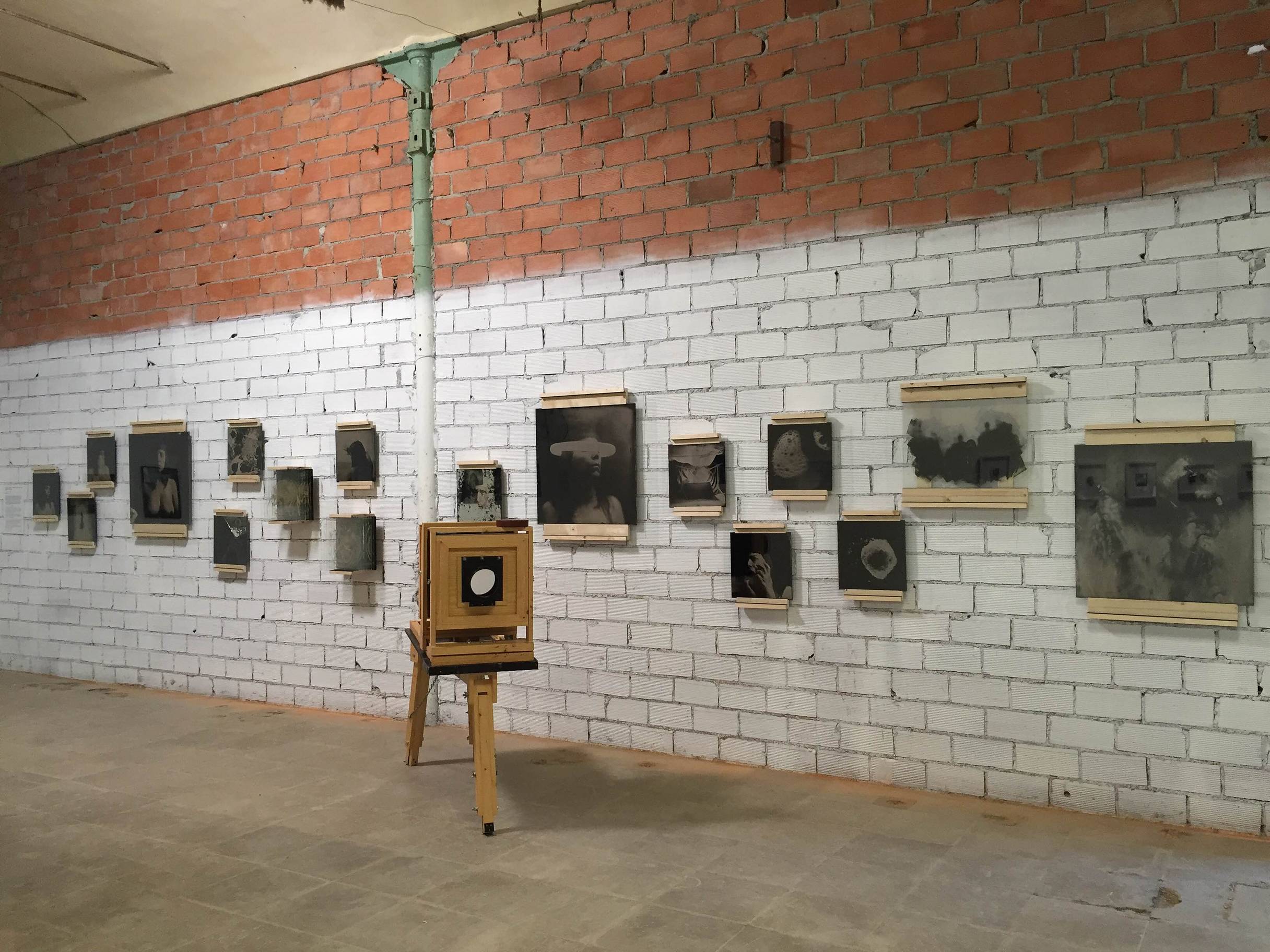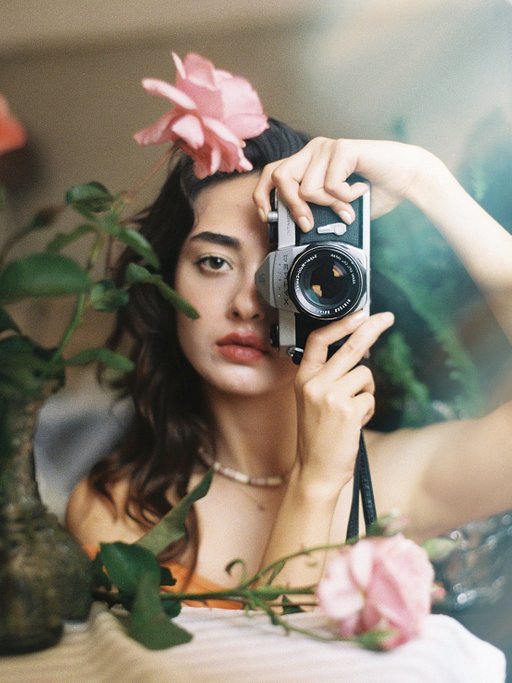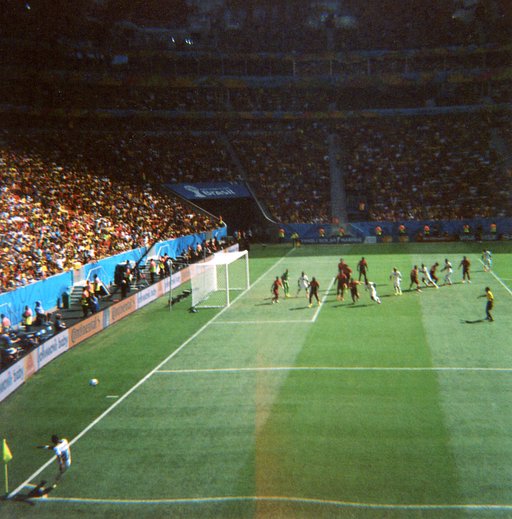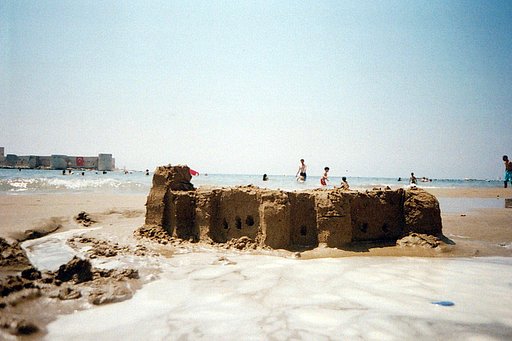Joaquín Paredes on Decoding "Hemicránea"
1 21 Share TweetChronic migraine is often misconstrued as “headache.” Its symptoms may not be obvious but it’s a debilitating condition that impacts a person’s well-being. Through his series “Hemicránea,” photographer Joaquín Paredes translates the harrowing, paralyzing sensations inflicted by this invisible illness into tactile, wet plate collodion prints.

Hi Joaquín! Please introduce yourself to the Lomography community.
My name is Joaquín Paredes and I am a 33-year-old photographer from Cáceres, a small town on the south west of Spain.
Can you recall the moment when you first held a camera? What was your first shots look like?
I will never forget the first time I used a camera. I was just a little kid, maybe 7 or 8 years old. I was going on a school trip for the first time and I told my parents that I needed a canteen and a camera. I guess it was just to show off but I had the urge to “document” that trip as my parents used to do in our family vacations. My mother lent me her old Voigtländer and gave some basic instructions. I remember that I took it very seriously but nothing came out of the film roll— the shutter was stuck and the whole film was ruined.
How did your interest with wet plate collodion start? What is the pull of traditional image-making processes such as this?
I have always been interested in the history of photography. But I never realized that all those historical processes could still be used today to create images until I saw someone working with the wet plate process. That is when I started reading old manuals and looking for the chemicals I’ll need. It wasn’t easy. At that time, no one was teaching wet plate in Spain and I was not able to get any help. It also took me a long time to find a chemical distributor that could provide all the necessary materials. Now there is a small community of wet plate shooters and some of us also do workshops. I am even writing a manual in Spanish that I hope will be available by the end of summer.
Your photo series, “Hemicránea,” “captures the problems of living with invisible illness such as chronic migraines.” What was the turning point that pushed you to tackle this issue?
Pi, my girlfriend, suffers from chronic migraines. Last summer, she was in pain for almost three straight months and I asked her if she wanted to work on a project about what living with this sickness means to her. She thought it would be a good platform to exorcise all the suffering and frustration that she was feeling and try to capture it into photographs. I suppose I never realized how hard having this illness was on your professional and personal life until I met her. When you cannot go to work because of it, people will not understand and think “you only have a headache."
What is the common misconception about chronic migraine that you want to shed light on with these photos?
People think that suffering from chronic migraines means that you sustain a very strong headache from time to time. That is the common assumption but chronic migraine is a life-changing sickness. Not everyone has the same symptoms. In addition to a strong pain, patients usually suffer from visual auras which blind you for a while, sickness, photophobia, phonophobia, etc. The medications for pain prescribed by doctors are so strong that they can leave them completely sleepy for hours. Next day, if they’re lucky and the pain is gone, they will feel incredibly tired.
Also the treatment to prevent migraines can be very aggressive to their bodies. Some of these pills are also used to treat epilepsy. They might gain weight, feel tired and sleepy the whole day… But the most terrible consequences of chronic migraines are the difficulties to have a normal personal, social, and professional life. It is even hard to plan a simple getaway weekend. If they get sick, they will have to go back home or find a dark and isolated place to recover. Because it is disguised as a “headache," which is something we all experience eventually, patients with chronic migraines suffer a systematic downplaying of their symptoms at work and even among their friends.
What do you want express in this series? What is the message that you want to rely to the viewers?
Some of the images have a clear message to the viewers. I wanted to represent some of the symptoms which migraine patients endure: pain, photophobia, isolation, visual auras… Some other images do not have a clear message. They are not that obvious and I expect viewers to “read” them as the please. I know what they represent to me but all interpretations are welcome.
Have you always planned to present “Hemicránea” using wet plate collodion? How does the aesthetic of this technique fit into your vision for this series?
Yes, I always thought of using wet plate when I was planning this project. You might think that it’s a very limited process and it is in terms of time, cost, and other technical characteristics (like the very low ISO of the emulsion, weight of the cameras, the need to develop and fix within 15-20 minutes after pouring the collodion on the plate, etc.) which makes it a very difficult medium to work with.
But when you think of all the aesthetic possibilities of collodion it becomes a very interesting and creative process. You can choose from a wide variety of materials as a substratum for the image. I love clear glass but you can use aluminum, different colors of tinted glass, Plexiglass, or mirrors. Even rocks would work. You can pour the emulsion on anything that doesn’t react with the chemicals. An image can be a positive or a negative depending on the background. It can be transparent or opaque. You can play with layers, veils. You can break the glass, scratch the emulsion, lift it… I love exploring the limits of this process.
Here is a little video of some reproductions on 6×6 cm ambrotypes of the pieces that were made with layers. The originals are 14×14 in ambrotypes from an enlarged MRA of her brain.
What was it like working on “Hemicránea”? Did you have a particular ritual when you shot this project?
No, not really. We more or less knew the symptoms and feelings we wanted to show on the exhibit. Then I planned and prepared the different shoots. It was very easy working with her. I guess that the hardest part was not knowing if Pi was going to be okay during the day of the session.
During shoots, do you prefer having a pre-visualized image on what you want to achieve or are you the kind who likes to go with the flow?
I must always have an idea of what I want to photograph in a session. Working with wet plate and ultra large format cameras is a very complex and time consuming task. It takes me several hours to prepare all the equipment and the studio. When I am shooting in the field, it may take me a whole day to take one photograph and it might not be a good one.
It doesn’t mean that I don’t improvise some photographs. If I see something interesting during the session and I think I can use it, I’ll certainly shoot it. One of my favorite plates of the series was shot this way. We were working on some other picture in our hallway. Pi was standing at the end of it and the light coming from the window behind her made her look like a centaur. I did not think twice and I took the picture. In Greek mythology, the centaur represents the violent and cruel side of nature. They tried to abduct the women at Hippodamia’s wedding, including Hippodamia. In my series, I liked the idea that the centaur represents the violence of migraines, the sickness that kidnaps Pi and keeps her away from her world, away from me.

Aside from wet plate collodion, do you also make images using other alternative techniques? Do you also shoot in other film formats?
Right now, I am using wet plate collodion for almost all my projects. I have even built a 14×14″ and a 28×28″ wooden cameras. I shoot film too. I have a small collection of film cameras from 35mm up to 4×5” and I use them all. I also print using some other historical and alternative processes as cyanotypes, salt prints, lumen prints, albumen…
On this digital age, why film, or in your case, wet plate collodion?
Why not? All these processes work and you can get wonderful pictures with them. When digital photography came along, we all thought we had to start using this technology, including myself. But after a couple of years, we have realized that depending on your work, you may not need the qualities that digital photography has to offer. If you are a photojournalist you may need a light camera with a high ISO, you may need to send your pictures to the other side of the world just minutes after taking it. But I don’t. I want to get a physical object. I love the effects that I can get with large format cameras. I love the reflectiveness of the silver on the glass. The process to get an image is also something that attracts me. In a world where almost everything we produce is non-material, just a bunch of zeros and ones, working with your hands and getting an object at the end is very reassuring. And also because it’s fun:
What’s next for Joaquín Paredes?
In November, I will be showing “Hemicránea” again as part of a photography festival in Cáceres and right know I’m working on a limited edition of the exhibit on 6×6 cm ambrotypes of all the original pieces. I also have another two ongoing projects, one of them is about the Spanish Civil War which I am hoping to show next year, or at least part of it.
All information, photographs, and videos in this article were provided to Lomography by Joaquín Paredes and used here with permission. To see more of his work, please visit his website or follow him on Facebook, Twitter, and Instagram.
Eunice Abique tarafından, 2016-08-07 tarihinde ve #insanlar #videolar başlığında yazıldı.























Bir Yorum